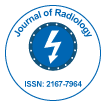Evaluating the Effectiveness of Radiation Dose Optimization Protocols in Clinical Practice
Received Date: Jun 03, 2024 / Published Date: Jun 28, 2024
Abstract
Radiation dose optimization is a critical component of modern diagnostic imaging, aimed at minimizing patient exposure while maintaining diagnostic image quality. This study evaluates the effectiveness of various radiation dose optimization protocols implemented in clinical practice. By analyzing data from multiple imaging modalities, including CT, X-ray, and fluoroscopy, we assess the impact of these protocols on dose reduction and image quality. We conducted a comprehensive review of existing dose optimization strategies, focusing on technological innovations, procedural adjustments, and protocol modifications. Our evaluation includes an analysis of dose reduction techniques, such as automatic exposure control, iterative reconstruction algorithms, and dose modulation strategies, as well as their influence on clinical outcomes. Our findings demonstrate that effective dose optimization protocols can significantly reduce radiation exposure without compromising diagnostic accuracy. The implementation of advanced technologies and adherence to standardized guidelines are key factors in achieving optimal dose management. Additionally, we identified best practices for integrating dose optimization protocols into routine clinical workflows and highlighted areas where further improvements can be made.
Citation: Secchettin E (2024) Evaluating the Effectiveness of Radiation DoseOptimization Protocols in Clinical Practice. OMICS J Radiol 13: 577.
Copyright: © 2024 Secchettin E. This is an open-access article distributed underthe terms of the Creative Commons Attribution License, which permits unrestricteduse, distribution, and reproduction in any medium, provided the original author andsource are credited.
Share This Article
Open Access Journals
Article Usage
- Total views: 467
- [From(publication date): 0-2024 - Mar 29, 2025]
- Breakdown by view type
- HTML page views: 291
- PDF downloads: 176
